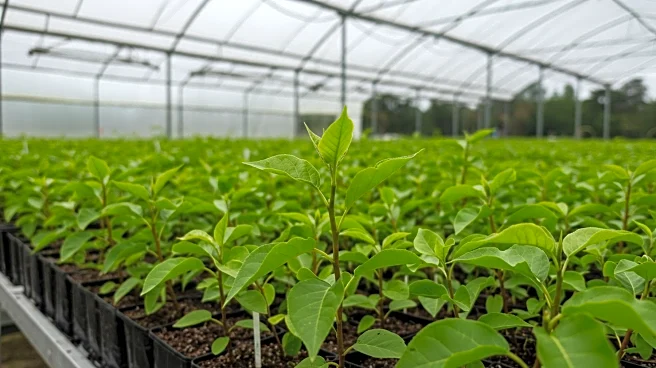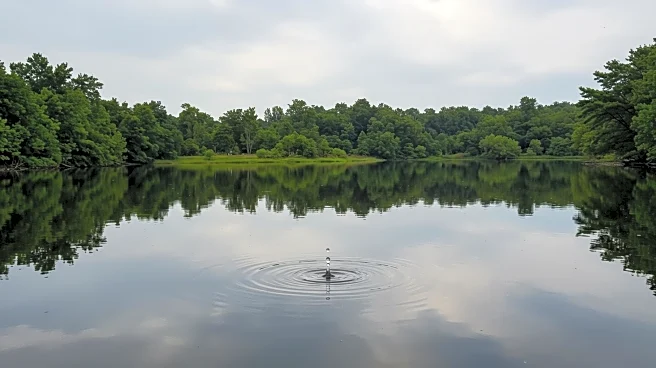Rapid Read • 7 min read
Researchers have discovered that mycorrhizal fungi play a crucial role in restoring temperate rainforests, which are under threat due to climate change. These fungi form symbiotic relationships with tree roots, enhancing nutrient exchange and supporting forest regrowth. The UK and Ireland, with their large expanses of unforested land, have the potential to lead global efforts in rainforest restoration. Scientists are mapping mycorrhizal communities to understand their role in forest ecosystems, aiming to use this knowledge to restore Britain's ancient hazelwoods and other temperate rainforests worldwide.
AD
The decline of temperate rainforests poses a significant threat to biodiversity and climate stability. Mycorrhizal fungi are essential for forest health, influencing tree growth and resilience. Understanding and preserving these fungal communities can accelerate reforestation efforts, contributing to carbon sequestration and ecosystem restoration. The UK's initiative to map and protect these fungi highlights the importance of integrating ecological knowledge into conservation strategies, potentially setting a precedent for global forest restoration practices.
Researchers will continue to document soil fungi across various sites to create a comprehensive map of mycorrhizal communities. This data will inform reforestation strategies, identifying areas with rich fungal biodiversity that are ideal for planting. Conservation organizations may explore soil inoculation techniques to enhance fungal presence in degraded landscapes. The success of these efforts could lead to increased funding and collaboration for rainforest restoration projects, both in the UK and internationally.
The focus on fungi underscores the interconnectedness of ecosystems and the need for holistic approaches to conservation. Protecting fungal communities not only aids forest restoration but also supports broader ecological functions, such as nutrient cycling and soil health. This research highlights the potential for innovative conservation methods that leverage natural processes, offering a sustainable path forward in the face of environmental challenges.
AD
More Stories You Might Enjoy











